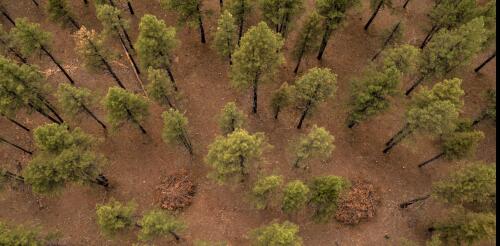Firefighting
The U.S. government is investing over US$7 billion in the coming years to try to manage the nation’s escalating wildfire crisis. That includes a commitment to treat at least 60 million acres in the next 10 years by expanding forest-thinning efforts and controlled burns. While that sounds like a lot – 60 million acres is about the size of Wyoming – it’s nowhere close to enough to treat every acre that needs it. So, where can taxpayers get the biggest bang for the buck? I’m a fire ecologist in Montana. In a new study, my colleagues and I mapped out where forest treatments can do the most to simultaneously protect communities – by preventing wildfires from turning into disasters – and also protect the forests and the climate we rely on, by keeping carbon out of the atmosphere and stored in healthy soils and trees. Wildfires are becoming more severe Forests and fires have always been intertwined in the West. Fires in dry conifer forests...
For three weeks in July, the world’s most elite bike racers climb steep mountains and sprint along historic cobblestones to capture the coveted yellow jersey or the race leader in the Tour de France. It’s a 21-day feat of human endurance that requires constant eating and drinking to manage the average daily energy demand of about 6,000 calories, equivalent to around 12 McDonald’s Happy Meals, and just over 1.5 gallons of water. Nearly 5,000 miles away in the mountains of North America, radios crackle with chatter from a wildfire incident command post, air operations and other crews fighting a wildfire. Up the fireline, the swings of Pulaskis, axlike hand tools, are carving a fuel break into the land. The weather forecast predicts a high of nearly 100 degrees Fahrenheit (38 C) with wind, a combination that can push the fire high up into the canopy of dense lodgepole pines on the mountainside. The yellow jerseys here are sooty, sweat-stained and flame-resistant...

